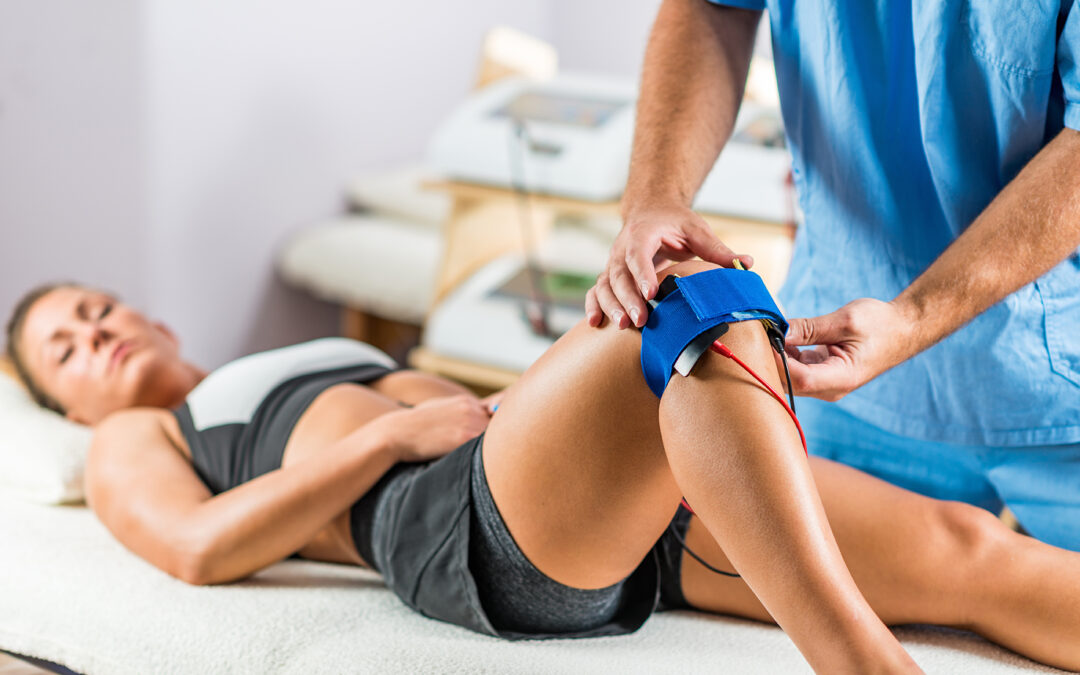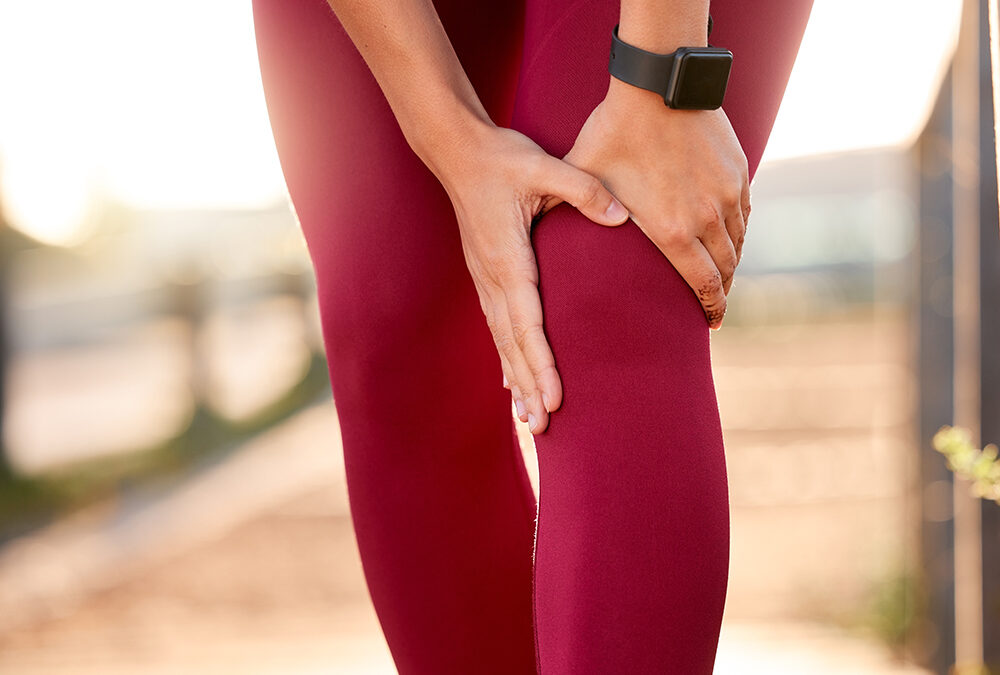Contents
Your knees consist of many parts that work together to help you with nearly every movement throughout the day, allowing you to walk, run, jump and navigate the world with ease. The knee is where the thighbone meets the shinbone and kneecap. Cartilage cushions these bones to help ensure a smooth sliding movement. Muscles, ligaments and tendons provide stability and support. Sometimes, a throbbing pain can erupt in your knee, transforming even the simplest of movements into a struggle that has a significant impact on your quality of life. However, understanding the cause of your throbbing pain is your first step to finding relief.
Potential culprits behind your throbbing knee pain
Throbbing knee pain can be a symptom of a variety of potential culprits. Some of the most common include:
- Injury — A sprain, strain or tear in the muscles, ligaments or tendons surrounding your knee can cause throbbing pain. This pain can be accompanied by swelling and stiffness. These injuries are usually due to a sudden impact, overuse or awkward movements.
- Arthritis — Osteoarthritis is known as wear-and-tear arthritis and affects 365 million people. Rheumatoid arthritis, an autoimmune disease, affects 18 million people. Both types of arthritis can cause throbbing pain, inflammation and stiffness in the knee joint.
- Meniscus tear — The meniscus is a C-shaped piece of cartilage that sits between the tibia and femur. It helps protect the lower part of your leg from the pressure created by your body weight. A tear in the meniscus can cause throbbing pain, swelling, and a clicking or catching sensation in your knee.
- Bursitis — Bursae are small, fluid-filled sacs that help cushion bones and tendons. Inflammation of the bursae is called bursitis. Bursitis around the kneecap can cause throbbing pain and tenderness. Pes anserinus bursitis is the most common type of bursitis in athletes; it can cause throbbing pain, especially when bending or squatting.
- Patellar tendinitis — Inflammation of the tendon that connects your kneecap to your shinbone can cause throbbing pain. This pain can be more noticeable when you are running, jumping, or climbing the stairs.
- Tight IT band — The iliotibial band (IT band) is a long tendon that runs on the outer side of your thigh. When this tendon becomes tight, it can cause throbbing pain on the outer side of your knee.
- Osgood-Schlatter disease — Osgood-Schlatter disease affects about 10% of teenagers and potentially up to 20% of teenage athletes. It’s thought to be related to growth and is the most common cause of knee pain in teenagers. It can cause throbbing pain and inflammation just below the kneecap due to overuse. This pain can be aggravated by activities like running, landing and jumping.
Treatments that can help tame throbbing knee pain
The good news is that no matter the cause, throbbing knee pain doesn’t have to be a life sentence. Depending on the cause and severity, a variety of treatment options can help you find relief:
- Rest and ice.
- Over-the-counter medication.
- Over-the-counter creams or gels.
- Compression and elevation.
- Heat therapy.
- Physical therapy.
- Corticosteroid injections.
- Surgery (in severe cases).
It’s important to consult with your health care provider to determine the best treatment plan based on your specific underlying cause and severity of knee pain. They can provide you with a personalized approach to help you manage and alleviate your knee pain effectively.
Physical therapy for throbbing knee pain
Physical therapy techniques that can help knee pain include:
- Ultrasound therapy — Ultrasound therapy uses sound waves to penetrate deep into the tissue around the knee. It can help promote circulation, reduce inflammation and help tissue heal. It can also be a helpful technique for bursitis and tendinitis.
- Electrical stimulation — Electrical stimulation uses electrodes, placed on the skin over specific muscle groups or nerves, to deliver low-level electrical currents to stimulate the nerves and muscles. It can help with pain management, improving blood flow, promoting tissue healing and muscle strengthening. It can be a beneficial technique for osteoarthritis, ligament injuries and meniscus tears.
- Manual therapy — A physical therapist with a Certification in Orthopedic Manual Physical Therapy (COMT) has mastered specialized manual therapy techniques. These specialized hands-on techniques include joint mobilization and soft tissue manipulation to target joint and soft tissue restrictions. These specialized therapy approaches can help loosen tight muscles and improve flexibility around the knee joint. Manual therapy can be beneficial for conditions like osteoarthritis, IT band syndrome, bursitis and meniscus tears.
- Therapeutic exercises — Your physical therapist can design a program of specific exercises tailored to your individual needs. The exercises can include strengthening exercises, stretching exercises and balance training. They are intended to help strengthen the muscles that support your knee joint. Stronger muscles can make you more stable and take stress off the injured area, reduce pain and improve your movement. Therapeutic exercises can help all knee conditions.
- Aquatic therapy — Aquatic therapy takes place in a low-impact environment that can be beneficial for conditions that cause throbbing knee pain. The buoyancy of the water helps take pressure off your joints, enabling you to do exercises with less pain and improving your range of motion. The water also provides gentle resistance against your legs, helping strengthen the muscles around your knees without extra stress.
By following the treatment plan from your physical therapist, you can reclaim your mobility and rediscover the joy of movement.
Reach the full potential of your knees with Lattimore PT
At Lattimore PT, we understand the complexities of knee pain and the disruptions that knee pain can bring into your life. Our experts, including 30 COMTs, offer compassionate and comprehensive care. Your treatment plan will be designed to address your specific needs and help you meet your recovery goals. Recovery is a journey, and our dedicated team will guide you every step of the way.
Contact our team today for more information or to schedule an initial appointment.



